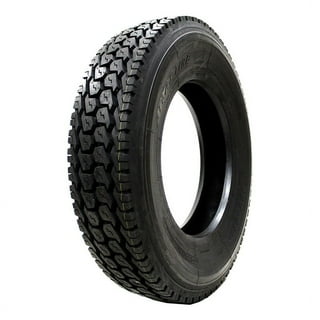Tire Service: Understanding Tire Pressure Surveillance Solutions
Comprehending Tire Stress Surveillance Equipments (TPMS) is a crucial element of maintaining optimal lorry performance and security when driving. With developments in automotive modern technology, TPMS has actually come to be a conventional feature in contemporary vehicles, giving real-time info on tire stress levels. Diving much deeper into the ins and outs of TPMS, one can discover the numerous elements that comprise this system and the significance of each in making sure accurate monitoring. From straight to indirect TPMS systems, the landscape of tire stress tracking is diverse, each with its distinct collection of considerations and advantages. Stay tuned to untangle the intricacies of TPMS, from upkeep pointers to the undeniable benefits of keeping your tires properly blew up. morris tire and alignment.

Value of TPMS
The value of Tire Stress Tracking Systems (TPMS) depends on their capability to boost vehicle security and performance via real-time tracking of tire stress degrees. Maintaining the proper tire stress is essential for making sure optimal handling, braking, and total security of a vehicle. TPMS gives motorists with immediate feedback on any kind of overinflated or underinflated tires, enabling prompt adjustments to be made.
Elements of TPMS
Making up different important components, a Tire Pressure Monitoring System (TPMS) operates as an innovative safety attribute in contemporary lorries. The main components of a TPMS include sensing units, a control component, and a warning sign. Sensing units are typically located in the tire valve stem or attached to the wheel assembly, where they determine tire stress and transfer information to the control component. The control module procedures this details and triggers a warning if it identifies considerably reduced pressure in any one of the tires. The caution indication, often a sign on the dashboard, notifies the motorist to examine the affected tire or tires. Some advanced TPMS versions additionally display the actual tire stress analyses for each and every tire, providing chauffeurs with real-time details to make certain optimum tire performance and safety. By keeping track of tire stress continuously, TPMS helps stop accidents, reduces tire wear, and boosts gas performance, making it a crucial part for automobile security and performance.
Kinds Of TPMS

On the various other hand, indirect TPMS depends on the car's wheel speed sensing units to keep an eye on tire stress. This system identifies underinflation by comparing the rotational speeds of the wheels. Indirect TPMS is much less costly than straight TPMS, as it utilizes existing sensing units within the automobile.
While direct TPMS uses extra precise readings, indirect TPMS is less complex in style and usually calls for less maintenance. Both systems have their advantages and restrictions, and the selection between them usually depends on factors such as expense, automobile make, and individual choice. Understanding the differences between these two useful site types of TPMS can help go right here vehicle proprietors make educated choices pertaining to tire upkeep and security.
TPMS Maintenance Tips
Reliable upkeep of TPMS is essential for ensuring optimum efficiency and security of your automobile. Frequently examining the TPMS sensors for any kind of damages or rust is essential. Make sure that the sensing units are clean and cost-free from debris that might interfere with their performance. Furthermore, it is recommended to check the sensing unit batteries periodically and change them as required to assure exact analyses. Conduct routine look at the tire stress degrees and compare them with the TPMS readings to guarantee they correspond. If there are any discrepancies, alter the system following the maker's standards. In addition, during tire turning or replacement, ensure that the TPMS components are managed thoroughly to prevent any kind of potential damage. Lastly, if the TPMS alerting light brightens on the dashboard, deal with the concern immediately by examining the tire pressures and the general system for any kind of mistakes. By sticking to these upkeep suggestions, you can extend the life expectancy of your TPMS and enhance the security of your driving experience.
Benefits of Appropriate Tire Pressure
Preserving correct tire pressure, as emphasized in TPMS Upkeep Tips, is essential for reaping the various official website advantages associated with optimal tire stress levels. Additionally, proper tire stress makes sure even tire wear, extending the lifespan of the tires and advertising safer driving conditions. In verdict, the advantages of appropriate tire stress go past simply tire durability; they include boosted gas efficiency, improved safety, better vehicle efficiency, and general driving comfort.
Conclusion
In verdict, understanding tire pressure monitoring systems (TPMS) is critical for maintaining ideal tire stress and ensuring automobile safety. By acknowledging the relevance of TPMS, being familiar with its parts, knowing the different kinds available, adhering to proper upkeep ideas, and realizing the benefits of keeping appropriate tire stress, motorists can boost their driving experience and prolong the lifespan of their tires. Proper tire pressure is crucial to risk-free and effective vehicle operation.
